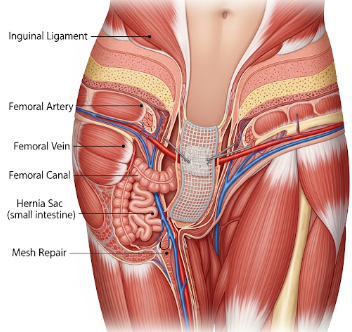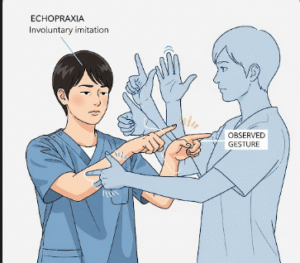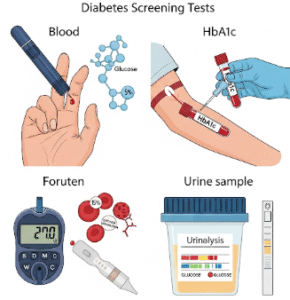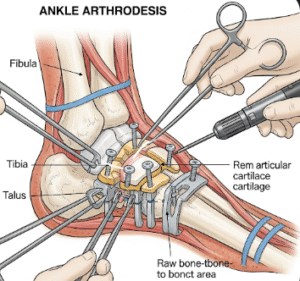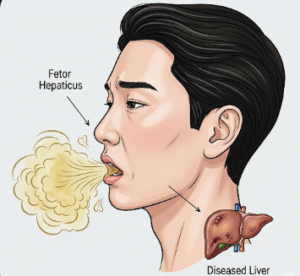What it is
A femoral hernia occurs when tissue, usually part of the intestine or fatty tissue, pushes through a weak spot in the femoral canal, located just below the groin. Although less common than inguinal hernias, femoral hernias are more frequent in women and carry a higher risk of complications like incarceration or strangulation, making timely repair crucial.
Femoral hernia repair is a surgical procedure designed to close the hernia defect, reinforce the weakened area, and prevent recurrence. It is typically performed under general or regional anesthesia and can be done using either open surgery or minimally invasive laparoscopic techniques.
Key points:
- Targets herniated tissue in the femoral canal.
- Aims to prevent life-threatening complications such as bowel obstruction or tissue strangulation.
- Can be performed as emergency or elective surgery, depending on the severity.
Why it’s done
Femoral hernia repair is indicated for:
- Symptomatic hernias: Pain, swelling, or discomfort in the groin area.
- Risk of complications: Femoral hernias are prone to incarceration (trapped tissue) or strangulation (cut-off blood supply), which can become medical emergencies.
- Preventive reasons: Even if asymptomatic, repair may be recommended due to high complication risk.
- Improving quality of life: Reduces chronic groin pain or discomfort during activities like walking, lifting, or bending.
Note: Early intervention is generally advised, as femoral hernias are rarely self-resolving and can worsen over time.
Alternatives
While surgical repair is the standard treatment, there are limited alternatives:
- Watchful waiting: In rare cases of small, asymptomatic hernias, doctors may monitor for changes, but this carries a risk of sudden complications.
- Truss or supportive garments: External support may temporarily relieve discomfort but does not correct the hernia and is not a long-term solution.
- Lifestyle modifications: Avoiding heavy lifting or straining can reduce symptoms but cannot repair the defect.
Important: Unlike some other hernias, femoral hernias are rarely suitable for non-surgical management due to their high complication risk.
Preparation
Proper preparation ensures safety and better outcomes:
Before surgery:
- Medical evaluation: Blood tests, ECG, imaging (ultrasound or CT scan) to confirm hernia size and location.
- Medication review: Patients must inform their surgeon about blood thinners, anticoagulants, or other medications.
- Fasting: Typically required 6–8 hours before surgery if general anesthesia is planned.
- Bowel preparation: Sometimes needed for laparoscopic approaches.
- Lifestyle considerations: Stop smoking and maintain hydration for optimal healing.
Patient instructions:
- Arrange for post-surgery transportation and assistance.
- Wear loose, comfortable clothing to hospital and after discharge.
- Follow preoperative instructions closely to reduce surgical risks.
How it’s done
Femoral hernia repair can be performed in two main ways:
1. Open Femoral Hernia Repair:
- A small incision is made over the groin near the femoral canal.
- Herniated tissue is gently repositioned back into the abdominal cavity.
- The defect is closed using sutures or a surgical mesh to reinforce the weakened area.
- Skin is closed with sutures or surgical glue, and a sterile dressing is applied.
2. Laparoscopic (Minimally Invasive) Repair:
- Several small incisions are made in the abdominal wall.
- A laparoscope (camera) and surgical instruments are inserted.
- Herniated tissue is reduced, and the defect is covered with mesh.
- Advantages include less postoperative pain, quicker recovery, and smaller scars.
Surgical Considerations:
- Choice of technique depends on hernia size, patient health, and surgeon expertise.
- Mesh is often preferred for lower recurrence rates, but in some cases, tissue-only repair may be done.
Recovery
Recovery varies based on the surgical method and patient health:
Immediate post-surgery:
- Patients may feel mild to moderate groin pain, controlled with prescribed painkillers.
- Walking is encouraged within hours to prevent blood clots.
- Hospital stay ranges from same-day discharge (laparoscopic) to 1–2 days (open surgery).
First 2–4 weeks:
- Avoid heavy lifting or strenuous activity.
- Groin swelling and mild bruising are common but gradually improve.
- Follow-up visits ensure proper wound healing and detect early complications.
Long-term recovery:
- Most patients resume normal activities within 2–6 weeks.
- Recurrence risk is low, especially with mesh repair.
- Ongoing lifestyle care—maintaining a healthy weight and avoiding straining—is recommended.
Complications
Though generally safe, femoral hernia repair can carry risks:
- Infection: At the incision or surgical site.
- Bleeding or hematoma: Accumulation of blood under the skin.
- Nerve injury: Rare, may cause temporary numbness or tingling.
- Recurrence: Higher if tissue repair is done without mesh.
- Chronic pain: Sometimes occurs in the groin post-surgery.
- Anesthesia-related complications: Including nausea, allergic reactions, or cardiovascular events (rare).
Preventive measures:
- Choose a qualified surgeon experienced in hernia repair.
- Follow postoperative care instructions carefully.
- Report persistent pain, swelling, or fever promptly.
Treatment Options in Korea
In Korea, femoral hernia repair is a well-established and highly accessible procedure:
Features of treatment in Korea:
- Available in general hospitals, surgical centers, and specialized hernia clinics.
- Both open and laparoscopic approaches are performed routinely.
- Emphasis on minimally invasive techniques for faster recovery and fewer complications.
- Preoperative evaluation includes advanced imaging and laboratory testing.
- Postoperative care involves pain management, wound care, and rehabilitation guidance.
Korean hospitals follow international surgical standards, ensuring high success rates and patient safety. Patients can expect modern facilities, experienced surgeons, and structured follow-up care for optimal outcomes.
Summary: Femoral hernia repair in Korea is a safe, effective, and timely procedure to address hernias that carry a high risk of complications. With proper diagnosis, preparation, and surgical care, patients can achieve full recovery and minimal risk of recurrence.

